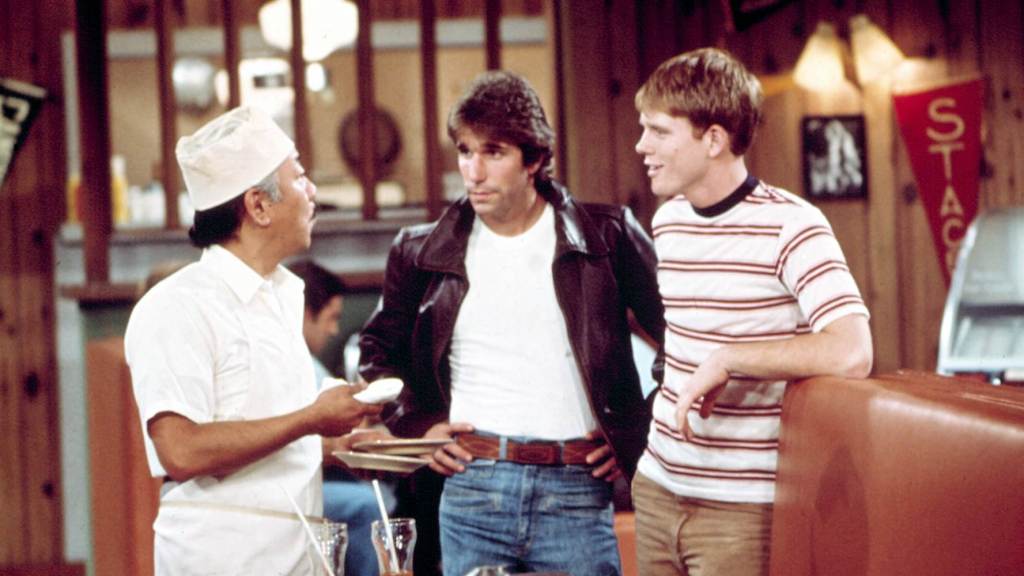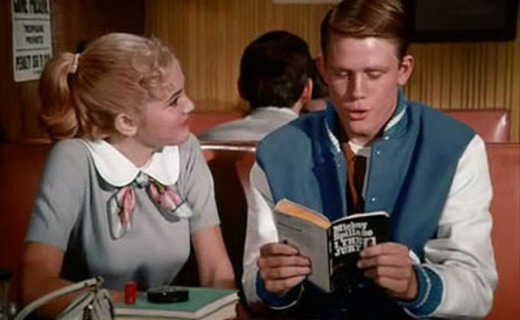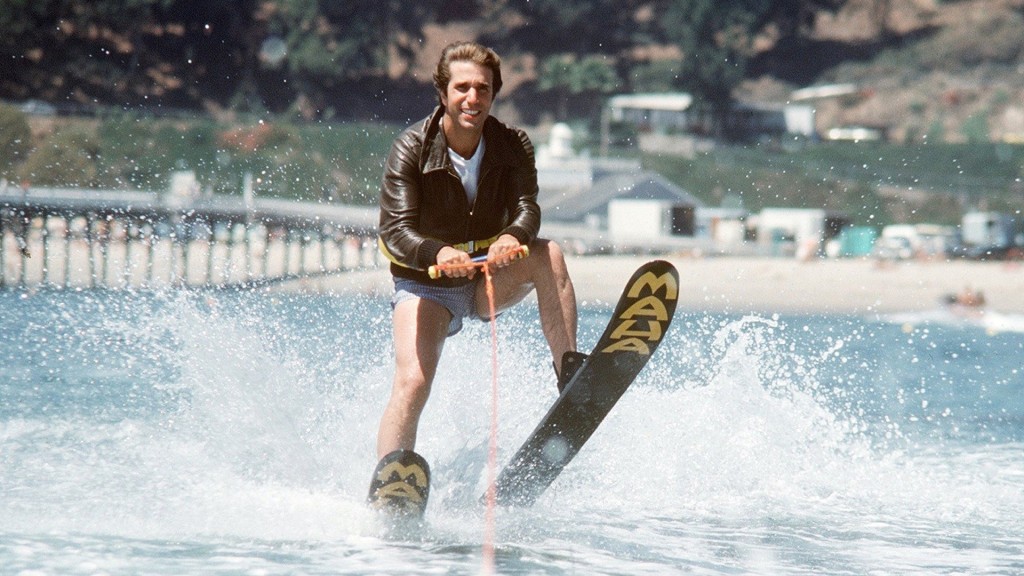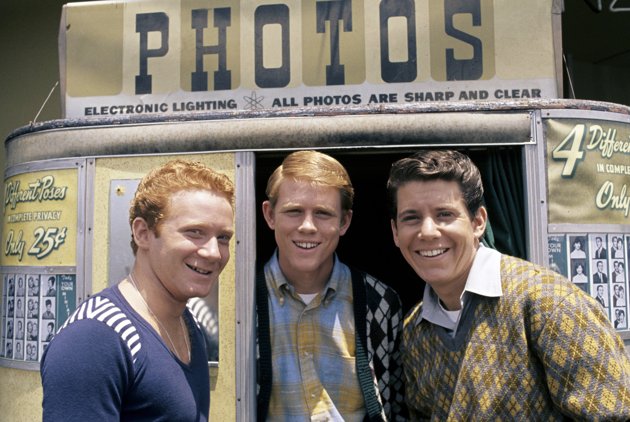It’s been a lot of fun this month to visit a variety of eras in my blog series: “Timeless Comedies: Living in the Past.” Last week we learned more about the fifties on Happy Days. Today we travel a few short years and end up in 1968 where we get to know Kevin Arnold (Fred Savage) on The Wonder Years.

Debuting in 1988 following the Superbowl Game that winter, The Wonder Years is narrated by an older Kevin; it described the life of a 12-year-old boy which is what viewers see. The show would last till 1993, and we were able to follow Kevin in his journey from a preteen to a man. The series produced 115 episodes during its time on the air.
Husband and wife Neal Marlens and Carol Black created the coming-of-age show. Kevin experienced all the typical angst and joy of an American kid growing up in the turbulent sixties. From heart-warming to heart-breaking, we journeyed with Kevin through the ups and downs of growing up.

Kevin lives with his father Jack (Dan Lauria), his mom Norma (Ally Mills), his older sister Karen (Olivia d’Abo), and his annoying older brother Wayne (Jason Hervey). We also get to know Kevin’s best friend Paul Pfeiffer (Josh Saviano) and his girlfriend Winnie Cooper (Danica McKellar). Although Kevin narrates the show, it’s narrated from an adult perspective and voiced by Daniel Stern. The narrator for the pilot was Ayre Gross. Later Stern re-recorded the episode so it matched the future shows on DVD.

Both the critics and viewers loved this show. After only six episodes aired, the show won the Emmy for Outstanding Comedy Series.
The theme song was Joe Cocker’s “With a Little Help from My Friends.”

When Black and Marlens began casting, all five casting directors they spoke with recommended Fred Savage for the role of Kevin. He had recently been in The Princess Bride. Finding an actress for Winnie became a bit harder. After narrowing down the choices, the creative couple were looking at two sisters, Danica and Crystal McKellar. It was practically a toss-up, but in the end, they chose Danica. However, they liked Crystal so much, they wrote her into the show as Becky Slater as an alternate girlfriend for Kevin in the later episodes.

In the pilot episode, Winnie’s older brother is killed in Vietnam. When Kevin consoles her, they end up having their first kiss. It truly was both the actors’ first kiss, so there is a tension there that made it touching. There is always an interest between the two but Winnie starts dating an eighth grader Kirk McCray, and Kevin eventually goes steady with Becky. When he realized he couldn’t shake his feelings for Winnie, he breaks up with Becky. Winnie goes through a similar process. The two share a second kiss at the beginning of their summer vacation the next year but continue to be just friends for a while.

Winnie and Kevin eventually become a couple. Not long after, Winnie moves. While her house is only a few miles away, she must change schools. The two continue their relationship for a while until Winnie becomes interested in another boy at her new school.
The three schools that Kevin and Winnie attend are RFK Junior High, Lincoln Junior High, and McKinley Senior High. All three were named for famous political men who were assassinated. Another fun fact about the schools is that whenever the kids were in the cafeteria, they have green Jell-O.

Winnie and Kevin would get back together again after she is injured in a car crash. They both attend the same high school and date much of that time.
It was tough for both the producers and the cast when you have minors on the set because you have to follow child labor laws. Savage explained his frustration at times. “You have to get at least three hours of school in every day. So, whenever I’m on a break, I go to school. It’s really intense because I have to get a lot done in short periods. And it’s hard because if they need you back on the set, they pull you away every twenty minutes. If you’re writing an essay and suddenly get inspired, you’ve got to stop and go back to work.”

Black and Marlens left the show after season one. I never found a reason listed, but some sources claimed it was because they were having a baby and wanted to escape the Hollywood environment and bring up their children somewhere else.
The show was cancelled in 1993. It was getting harder to keep the plot innocent and fitting for the primetime slot people were used to with a seventeen-year-old. Escalating costs and declining ratings also took their toll. When the final episode of the series aired, the cast still was not sure if this was the final show or if it would be coming back for a seventh season, so the finale was not as smooth or wrapped up as the team wanted.

I’m sure one of the questions people ask Fred and Danica was were they also in love. The fact and fictional parts of the show blurred a bit. Both Fred and Danica mentioned in a People interview that they had a crush on each other at one time or another. Fred said, “I was in love with her for the same reasons every other boy fell in love with her.” He also said, “You won’t meet a sweeter, nicer girl—and she’s gorgeous.” Danica also talked about her crush. “In the beginning we had a mutual crush. Then things went into the teasing stuff and then into a more comfortable, brother-sister thing.”

Another blurring was some of the script language. I remember Sherwood Schwartz’s daughter complaining that something happened in her life and then it ended up on The Brady Bunch. In a similar manner, some of the writers incorporated things Fred and Danica said to each other off camera into the scripts.
Jason Hervey improvised some of the scenes he had with Kevin. Jason remembered some of the things his older brother did to him and in turn tormented Kevin with them. There are a few scenes when Wayne has to drop Kevin off or pick him up, and he would keep inching the car forward as his little brother tried to get in or out. That happened to him in real life.

Finally, the show mirrored life in that on the show Paul Pfeiffer attended Harvard to become a lawyer. In real life, Josh Saviano also became a lawyer, after attending Yale.

The show has held up surprisingly well in reruns. It’s similar to M*A*S*H. You know the show is set in Korea in 1950, but the themes it demonstrates are timeless and the relationships could occur in other times and places.

The Wonder Years works for the same reasons. Neither Kevin nor Winnie are the most popular kids in the school, but they are two of the nicest. If you ever looked back in an old yearbook from junior year or high school, you’ll see kids that you kick yourself for not dating. At the time, they just weren’t the popular kids everyone was interested in, but you realize they were the kids you should have ended up with. Although this show is set with the backdrop of the sixties when times were unpredictable, the primary subject of the show is the relationships Kevin has with this friends and family. The reality and sentimentality of those relationships is the same whether you watch a show from the 1940s, the 1960s, or the 1990s.

Do yourself a favor if you never watched the show or haven’t seen it in a couple decades and treat yourself to a week-end of binge watching. It only gets better with age.











































